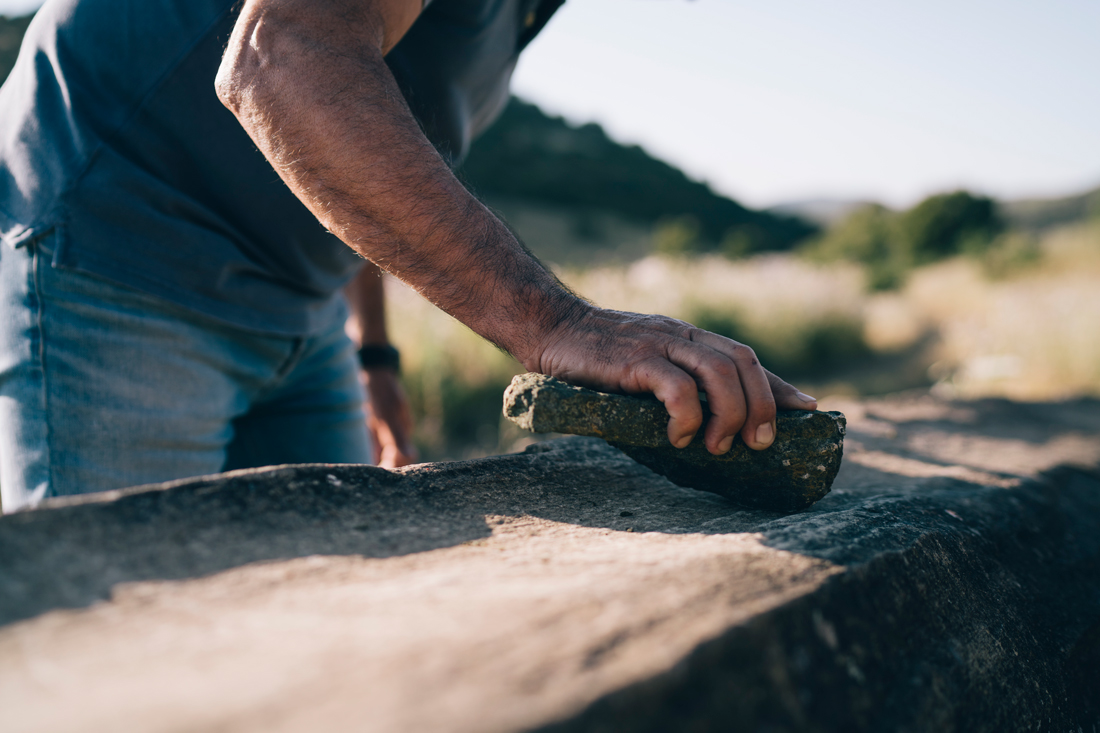Integrated Project Between MAN, “Mario Sironi” Academy of Fine Arts of Sassari, and the Marco Magnani Association
At the MAN Museum in Nuoro, an exhibition-restitution opens, the result of an extensive cultural project that brought together various cultural institutions for over a year of research, focusing on the enhancement of a rich and complex territory like Planargia. Located in the historical region of central-western Sardinia, Planargia lies between the Temo river valley—Sardinia’s only navigable river—and the northern slope of Montiferru, the island’s largest volcanic complex. The landscape of Planargia stretches from towering cliffs over the sea to the high plains inland, offering a vast, green panorama dotted with forests, waterfalls, basalt quarries, and fields of asphodel.
The ISCRA_Flotta culturale del Mediterraneo project was conceived by artist Leonardo Boscani and formalized through a multi-party agreement signed by the MAN Museum of Nuoro, the Academy of Fine Arts “Mario Sironi” of Sassari, the Union of Municipalities of Planargia, the Municipality of Flussio, the Marco Magnani Association, the Cosinzu de Isciareu Association of Flussio, and the Ecomuseum of the Sea and Water of Sassari; all with the contribution and support of the Fondazione Sardegna.
Led by Leonardo Boscani, a fleet of artists—including the Check Point Charly collective, with Giorgio Porcheddu, Lucia Magnifico, Marco Facchetti, sound engineer and musician Alfredo Puglia, and stone craftsman and artist Carmelo Logias—along with professors and students from the Academy of Sassari, explored the territory of Planargia on a journey from coast to sea, translating it into works that blend aesthetic languages and anthropological reflections. The project includes art prints and documentation of traditional heritage (e.g., the processing of asphodel, “the gold of Flussio”), experimental photography, acoustic traces, and symbolic mapping of the relationship between nature and society, sculpture, and exploration of the region’s geosites (such as the valorization of Suni’s basaltic and columnar stones).
From sailing along the coast to delving into the geological site of Suni, from collecting asphodel to exploring the railway connecting Bosa to Macomer, the exhibition presents a long journey through images—a narrative “interspace” that, despite diverse languages, converges in the shared commitment to listen, understand, and return the profound character of the place, its identity, and its emergent qualities.
The navigation imagery, based on sailing routes, serves as the backdrop for the imposing presence of a three-meter-tall, seven-ton basalt column with a polygonal base, symbolically laid out like an ancient sundial. This archaic monolith, a giant stone relic, carries the effusive volcanic memory of Planargia and, through a QRCode engraving, provides access to a contemporary storytelling dimension, maps of explorations conducted during the project, and visions of a landscape preserved for future generations in its history and nature.
The artistic residency hosted in the village of Flussio tied the artists’ research to the community, which was involved day by day in the process of restitution. While a team of authors, directors, and photographers moved through the territory to find visual inspiration, conduct interviews, and document moments of daily life, students and professors from the Academy—coordinated by professors Giovanni Sanna, Sergio Miali, and Davide Fadda—revisited the ancient practice of asphodel processing and interpreted its formal outcomes, blending them with technical experimentation on the monochrome of Suni stone. This led to the creation of the “Nero di Planargia,” a unique tone of basalt, whose chemical composition was fixed to create a specific “RAL” color code.
The ISCRA project outlines a cultural route that, from the sea to the hills, from ancient gestures to contemporary technologies, draws new horizons for the Mediterranean—not only as a geographical space but as a dynamic metaphor for exchange, mobility, and transformation.
Coordination:
MAN Museum, Rita Moro, Alessandro Moni
Marco Magnani Association, Rita Delogu
Ecomuseum of the Sea and Water of Sassari
Traditional Latin Sailing Association (AVeLa), Piero Ajello
Academy of Fine Arts “Mario Sironi” of Sassari:
Professors: Alessandra Brancati, Davide Manca, Nicolas Martino, Cristina Orsatti, Marco Antonio Pani, Alessandro Ponzeletti, Giovanni Sanna, Oscar Solinas, Federico Soro
Students: Adele Abozzi, Matteo Alba, Antonio Cau, Carla Cannas, Claudia Carta, Francesco Cherveddu, Giommaria Chessa, Luciana Yasmina Congiu, Lina Dau, Lino Deligia, Enrico Delrio, Christopher Filippo Dickey, Andrea Doneddu, Alessandra Fiori, Taras Halaburda, Lucia Loria, Antonello Marchesi, Silvia Marcias, Margherita Masia, Gabriel Meli, Giovanni Moretti, Michael Ogana, Alice Patteri, Simona Pes, Rebecca Pilloni, Oscar Piras, Emma Porcu, Federico Satta, Francesco Tetti.
Bilingual ITA/EN Catalogue-Photographic Album
Published by Interlinea, curated by Leonardo Boscani and Chiara Gatti,
photographs by Daniele Brotzu,
critical text by Nicolas Martino.

